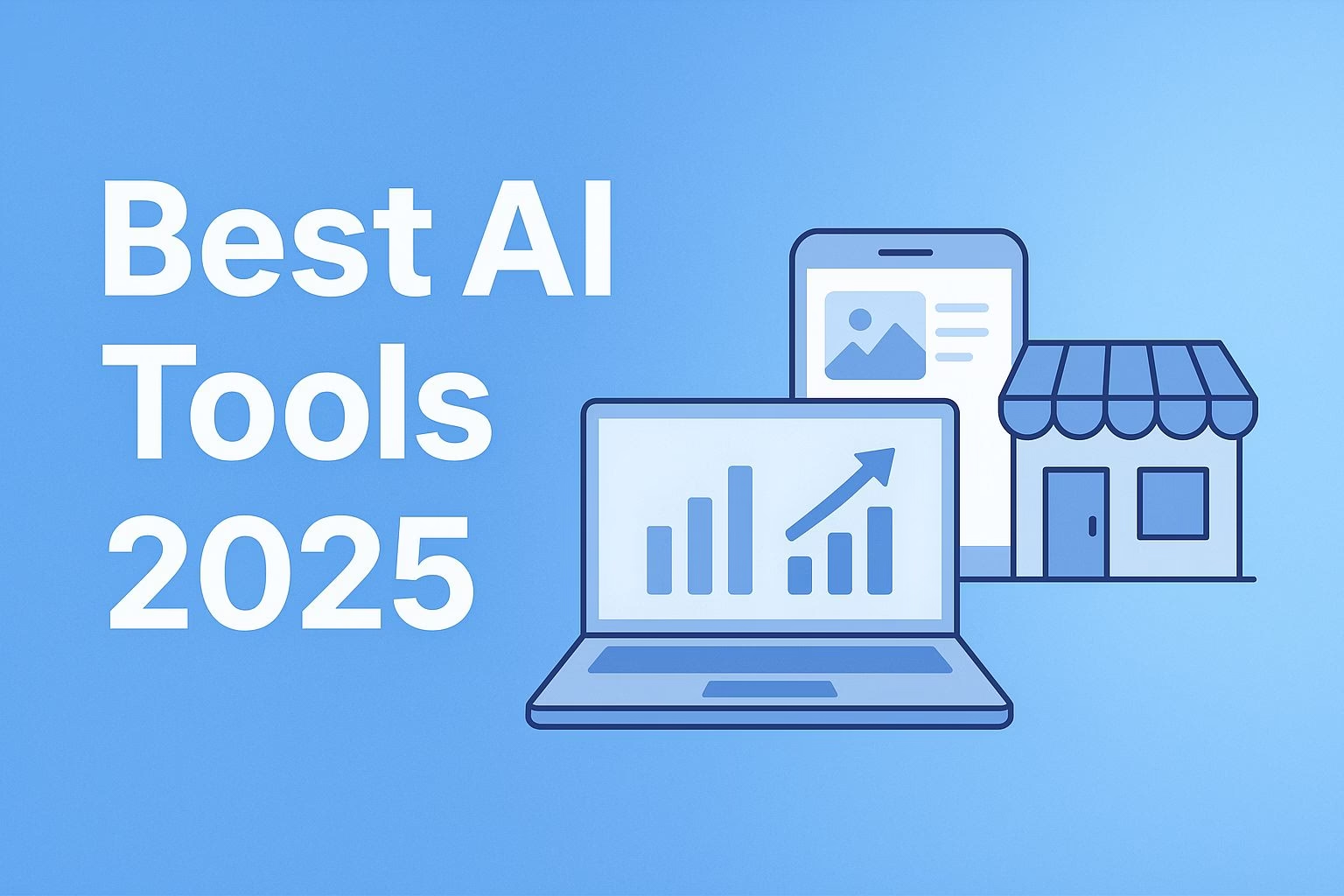Best AI Tools for Small Business Growth in 2025
Key Takeaways
- AI tools help small businesses create content, manage support, and stay consistent online.
- Automation improves efficiency in scheduling, invoicing, and operations.
- AI-driven analytics provide insights that replace guesswork with data-backed decisions.
- Too many disconnected tools can become overwhelming; integrated solutions work better.
- Blaze Autopilot ties content creation, posting, and optimization into one system.
- AI levels the playing field in 2025 by giving small businesses access to big-brand power.
- The smartest strategy is to use AI for scale while focusing human effort on strategy and relationships.
Running a small business today means competing with bigger brands that have more people, more money, and more resources.
That used to feel like an impossible gap to close, but AI has changed the game. With the right tools, I can now automate parts of my business that once required entire teams, and I can do it at a cost that actually fits my budget.
The challenge is not finding AI tools; it is deciding which ones are worth using. Every week, it seems like a new platform launches, promising to save time or boost growth.
I have tested enough of them to know that not all deliver on those promises. The key is picking tools that actually solve problems and create measurable results.
In this article, I am going to share the AI tools that stand out for small business growth in 2025. These are the ones that save time, cut costs, and scale operations without draining resources.
I will also explain where automation fits best, where human effort is still needed, and how one tool in particular gave me an advantage I could not get elsewhere.
AI for Content Creation and Marketing
One of the hardest parts of running a business is staying visible online. Social media, blogs, and email all demand constant content, and creating it by hand quickly eats up hours.
AI has made this part of marketing much easier. I now use tools that can generate captions, design graphics, and even draft blog posts in my voice.
These tools save me from the blank-page struggle. Instead of starting from scratch, I get drafts that I can edit and refine. What once took me hours now takes minutes.
The quality has improved too, because AI systems are trained to recognize patterns that perform well. That means I get ideas I might not have thought of on my own.
The real benefit is consistency. I no longer fall behind on posting schedules or newsletters. By letting AI handle the first draft and structure, I am able to show up regularly without burning myself out.
For a small business, that kind of steady presence is what keeps growth moving forward.
AI for Customer Communication and Support
Customer support used to feel like a constant interruption. Questions came in at all hours, and I struggled to respond quickly enough.
AI has taken much of that weight off my shoulders. Tools like chatbots and automated email responders now handle the common questions that once filled my inbox.
These systems are smart enough to guide customers through basic problems, provide answers instantly, and even route complex issues to me only when necessary.
That means customers get help right away, and I only step in when the situation truly requires my input.
What I like most is how AI makes the experience smoother for both sides. Customers feel cared for because they get fast replies, and I save hours that I can put back into the business.
With AI support systems in place, I can serve more people without needing to expand my team.
AI for Operations and Efficiency
Behind the scenes, small tasks used to pile up and slow me down. Scheduling appointments, managing invoices, and tracking inventory all took more time than I wanted to admit.
AI tools have simplified those processes by automating the routine work that once demanded constant attention.
For example, AI-powered scheduling systems now handle bookings automatically. Customers can choose times that work for them without the back-and-forth emails I used to deal with.
On the finance side, AI tools flag late payments, generate reports, and even predict cash flow trends based on past data.
These are things I used to track manually, which often left room for mistakes.
The time I save with these tools has given me back hours each week. Instead of managing repetitive admin work, I can focus on strategy and customer relationships.
Efficiency is not just about saving time; it is about creating the space to focus on growth.
AI for Sales and Growth Analytics
I used to rely on gut feeling to make decisions about what products to push, when to launch campaigns, or how to price services.
That guesswork worked sometimes, but it also led to missed opportunities. Now, AI gives me data I can actually use to guide those decisions.
With AI-driven analytics, I can see which campaigns bring in the most leads, which customer segments are most profitable, and which times of year drive the most sales.
The tools go beyond tracking; they predict future patterns by analyzing past performance. That kind of insight used to be available only to large companies with dedicated teams.
The biggest change is confidence. Instead of hoping my next move will work, I know why it should.
That clarity has helped me avoid wasted spend and focus on actions that actually drive growth.
Those smarter decisions add up to a significant advantage.
The One Tool That Ties It All Together
Trying different AI tools taught me that while each one solves a specific problem, managing too many platforms can become its own challenge.
I wanted something that could handle the full cycle of marketing without me needing to constantly switch between apps.
That is where Blaze Autopilot made the difference.
Blaze scans my website, learns my brand voice, and then creates and schedules content automatically. It also studies engagement to improve over time.
Instead of juggling multiple tools for posts, design, and analysis, I get everything tied together in one system. That single shift gave me more consistent results with far less effort.
AI in 2025 Levels the Playing Field
For small businesses, the advantage of AI is simple. It gives us access to the kind of power that used to belong only to big brands with large budgets.
Whether it is creating content, managing operations, or analyzing sales, AI makes it possible to do more with less.
That levels the playing field in a way I never thought possible a few years ago.
The key is choosing the right tools and using them to support the areas that drain the most time.
Letting AI handle repetitive tasks makes it possible for small business owners to focus on strategy, creativity, and building relationships, the parts of the business that truly need a personal touch.
Looking ahead, I see AI as less of a trend and more of a foundation. Businesses that embrace it now will grow faster, save more time, and stay competitive.
Those who resist will find it harder to keep up. For me, adopting AI has already proven to be the smartest investment I could make.

